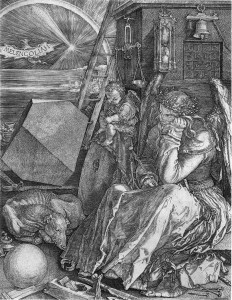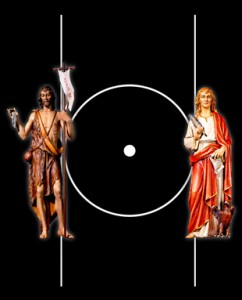
The reason to approach the review in 2 parts is that in the aftermath of National Treasure, Freemasons were well versed to talk about the founding fathers and the Knights Templar. With the lost symbol, lodges and individual Masons need to be just as prepared to talk about Hermetica, Gnosticism, and symbolism, especially as the book speaks to the wide tolerance of the fraternity to all faiths.
Key points brought up in the book start at the very prologue in the Quote from Manly P. Hall’s The Secret Teachings of All Ages when he quoted “To live in the world without becoming aware of the meaning of the world is like wandering about in a great library without touching the books.” Brown circumvented the patriotic picture of Washington (the man) and went directly to the post war enlightenment that tapped into the ideas of Francis Bacon’s New Atlantis and Hermetica
’s deism (all faiths beginning at one source).
In The Lost Symbol, Pike gets a quick mention, but the Scottish Rite’s deep resonance with the ancient mystery schools was very clear and it is my supposition that those who are attracted to the fraternity following this book will come with those things in mind, and in coming, they will want to talk about and find resonance with the fraternity.
Read Part 1: The Lost Symbol – A Review
So, to the question, is the symbolism right, did Brown get the symbolic connections remotely correct, or did he tap into the wide field of myths and supposition that exists at the foot of the “Masonic pyramid?” Often, that answer is an individual one, that many tend to think totally out of line with what the modern fraternity represents. It is more social than esoteric, the symbols are just that symbolic, and no further reading need be made into them. Or even harsher, that the symbols were important in the past, but today they are meaningless. I think the answer lies in the school of Masonic thought that you find yourself in.
Some of the Key texts that Brown refers to are the Kybalion, written by br. Paul Foster Case under the pseudonym the Three Mystics, The New Atlantis, mentioned above, by Francis Bacon , a mere 6 years following the founding of the “new world” and the landing at Plymouth Rock in 1620. He also references Albrecht Durer, the prolific artist of the Renaissance who created many images, including Melencolia I, often seen as the height of the Christian Mysticism in art, as it depicts the confounded and pondering mystic and the materials of his practice. Each of these are bits and pieces outside the sphere of the three degrees, but still factor large (or should) in the study of Freemasonry.

One element that Brown focuses on is the alchemical symbol of gold, something in Masonic circles is referenced to as the point within the circle, what Brown calls the circumpunct, that all Masons recognize as being flanked by the Holy Saint John’s and crowned with the Volume of the Sacred Law.
The individual symbols are not so much the concern from the book, but the level of readiness over the ease of disregarding them and the discussion of their meaning. Is the lodge room ready to talk symbolism and its speculative nature? Are you, reading this now, ready to dialog with an interested party on the symbolism even on a surface level?
I think all will agree that the book is a work of fiction, but even a work of fiction unless wholly constructed with imaginary creatures and alien landscapes will still speak to and communicate a message, and Freemasonry needs to be ready to speak to that message even if it includes flights of fancy and imagination.

Central in Brown’s fiction is Freemasonry’s connection to the ancient mystery schools, and like it or not, that will be the message that those who have read the book will come to the lodge seeking. Few will likely come away with the greater subtext of the fraternity and the its more visceral purpose, the unification of like minded men, the sincerity of the belief that Masonry teaches something deeper than an inexpensive spaghetti dinner and some handshakes between strangers.
The Lost Symbol will ultimately be a good opportunity for Freemasonry to shine and inspire those new to its doors to seek out more. But it will definitely require us to be on point and be able to answer the questions put forth by those newcomers. Brown mentioned it at the end of his book, the words on the back of the tylers chair at the House of the Temple, “Know Thy Self”, but I would add, in knowing our self, we will know the divine.

why did you crop Duerer’s Melencolia and left out that genius magic square? i know that’s not the subject in this article, but still … 😉
(ah i am sorry.. you didn’t .. sorry, i guess i’m just sleepy .. again, great article/research. respect)
Pingback: The Lost Symbol Found! – Masonic Central Podcast | Freemason Information